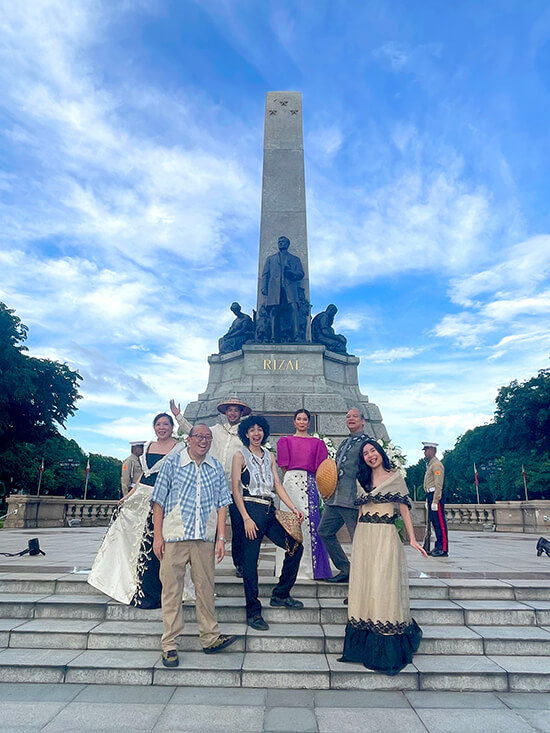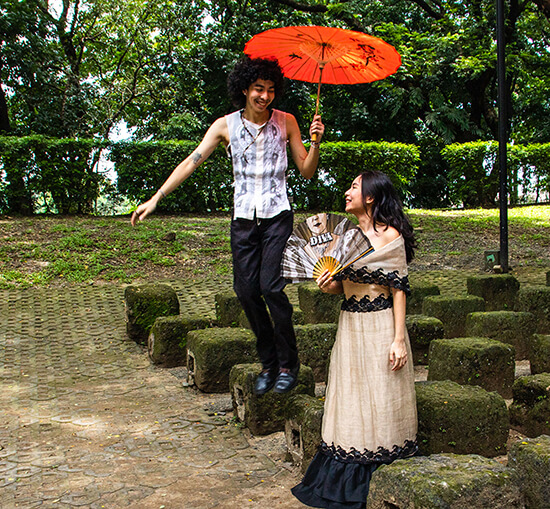Soon you can rent a costume and do Instagram shots at Rizal Park
Hiding in plain sight is one of Manila’s most meaningful green spaces, and one of the largest urban parks in Asia. How often do we drive past this vast expanse of lawns, gardens, fountains, walking areas, monuments and sculptures, taking for granted this 58-hectare landmark where so much of our history has unfolded? And yes, I’m talking about Rizal Park, or Luneta, as it has been called for decades.
Luneta was part of the design of noted American urban planner Daniel Burnham who designed Washington, DC. Located along Roxas Boulevard, bounded by Taft Avenue, TM Kalaw and Padre Burgos Avenue, it is among the jewels of living history alongside Intramuros and the stately buildings of the National Museum.
I am guilty of passing by the park, briefly soaking in an expanse of green, yet forgetting about the sacrifices of heroes and other momentous events that have shaped our nation. The park is steeped in significance, from the 19th century executions of Jose Rizal and the GomBurZa martyrs, to the declaration of Philippine independence from the United States on July 4, 1946; to the 1980s political rallies of Ferdinand Marcos and Cory Aquino which led to the People Power Revolution of 1986.

While we Filipinos eagerly explore the parks abroad, such as Central Park in New York, the Tuileries Gardens in Paris and the Imperial Palace Gardens of Tokyo, it’s been a long time since we’ve actually considered having a picnic at Luneta. When I was growing up in the sixties, you spotted families on the lawns and had field trips to the planetarium. But as the decades passed, we’ve shifted our attention away from Luneta to air-conditioned malls.
Today, a revitalized Luneta Park is emerging under the stewardship of the National Parks Development Committee headed by executive director Cecille A. Lorenzana and deputy executive director Jezreel Gaius A. Apelat. It was serendipitous that we shared a table at the recent Bangko Sentral launch of its contemporary art collection at the National Museum. We knew that our favorite Papa Kape had opened a branch at Luneta, but Cecille also informed us that the group behind Villa Tortuga in Taal would be opening a costume rental place.

This would allow visitors to don traditional Filipiniana as they take social media photos and videos among the storied pathways and monuments of the park. I thought this was exciting because when I visited China, local tourists in Jiuzhaigou eagerly rented Tibetan costumes to add to the experience of posing beside the turquoise lakes and mountain wide waterfalls. Same in Chiang Mai in Thailand, where we dressed up in beautiful silk costumes as we made khratong, the flowered arrangements to float down the river. I learned that the Gyeongbokgung Palace in Korea allows visitors to enter for free when they wear the traditional hanbok, which can be rented at the site.
And while Villa Tortuga will be opening soon at Luneta, what’s to stop us from bringing our own Filipiniana finery, whether traditional or stylishly contemporary, as we pose alongside the gardens, monuments and even at Papa Kape, which takes the Pinoy coffee experience to a whole other level with uniquely crafted drinks?
On our visit to Luneta, we were toured around the park by Jez Apelat. He provided background information and pointed out the prominent features of the park. He told us that there are free walking tours and visitors can get the schedule for these from the Facebook and Instagram pages of the National Park Development Committee. Private tours can also be arranged through their office. Best of all, Jez gamely posed with us in barong and even provided salakots for the men in our group to wear! Photographer Anson Yu took our photos during this visit, focusing on classic Luneta picture sites that Jez showed us.

First thing to know is that there is ample parking available at both TM Kalaw and Padre Burgos Avenue. If you enter from TM Kalaw, you will pass the Visitor’s Center where you can grab a meal of Filipino food and shop for souvenirs. Then, walking onwards you will already begin to spot different monuments such as a sculpture donated by the Korean government. This path continues past the back of the Rizal monument on the left. Continue north while noting the entrance to the Chinese garden on the right and the auditorium designed by National Artist Leandro Locsin, now outfitted with new lighting and sound systems, a spacious new dressing room and rehearsal areas fit for top local and visiting performers.
“Your taxpayer’s money is going to good use here,” says Jez proudly. “The weekly cultural shows that are open to the public include a Concert at the Park. There is also a Stop and Salute monthly flag ceremony and scheduled times when the military performs silent drills. All this information can be gathered from the park’s social media.”
Next stop is Papa Kape, which you will arrive at after passing a picturesque bridge and a black granite wall immortalizing Jose Rizal’s Mi Ultimo Adios in Filipino, English and Spanish. The Papa Kape branch here is the latest iteration of Manu Reyes’ beloved coffee shops. Situated inside a structure with an outer wall of decorative stone, the coffee bar’s wide glass windows allow visitors to gaze at the Eduardo Castrillo sculptures of Rizal being executed by firing squad. Soon, Papa Kape will install more glass windows so you can have a view of the Rizal monument from inside.
“The coffee shop is now a space where something as important and as fundamental as the story of our heroes, such as Jose Rizal can be part of your everyday activities,” says Manu. “Meeting up with friends, having coffee or celebrating birthdays, you have a dose of Jose Rizal which you don’t usually get, so it’s education on a level where you can grasp it.”
After enjoying your Polvoron Dinosaur coffee, fresh guava juice or a peach mango pie soda, time your photo op at the Rizal monument to be in the afternoon because, in the morning, you will be posing against the light. This monument was designed by Swiss sculptor Richard Kissling (1848–1919). Interred inside are the remains of Jose Rizal. The honor guard of the Philippine Marine Corps. have been posted there since the 1960s, with a daily ritual of the changing of the guard.
There are many photogenic spots in the park such as the replica of Emilio Aguinaldo’s house, the Chinese gardens, the Japanese gardens and walkways where you get different vantage points of the Rizal monument and the flagpole in front of it. Go all out—don’t just think outfit, think props like parasols and fans for the ladies, salakots for the men. Hire a horse-drawn calesa for that period feel.
Finally, time your visit to be at the fountain area at 5:30 p.m. when the park comes alive with the fountain display, music, color and lights. By this cooler time of the day, Luneta starts to fill up with families, tourists, students, joggers and office workers unwinding before heading home.
If you’d like to enjoy a good yet reasonably priced Chinese meal in between your picture taking and strolling around, head to Mr. Peter Lee’s Hongkong Tea House on A. Mabini. There is even a decade-old framed review by The Philippine STAR on the wall! Everything is delicious, from the siomai and chicken feet to the braised eggplant with minced meat, to the sweet and sour pork and lechon kawali, to the crispy prawn salad and finally buchi for dessert.
And while you enjoy posing with your Filipiniana attire at Luneta’s storied spots, remember what Rizal Park stands for. It is a site where movements towards freedom and independence, democracy and sovereignty were birthed. Today it seems that we are still struggling with some of these issues. Luneta Park can be a poignant reminder of what has been accomplished by brave Filipinos in the past, and what can still be accomplished today and in the future by Pinoys who yearn for a better country, and who love its culture, costumes, history and heritage.


